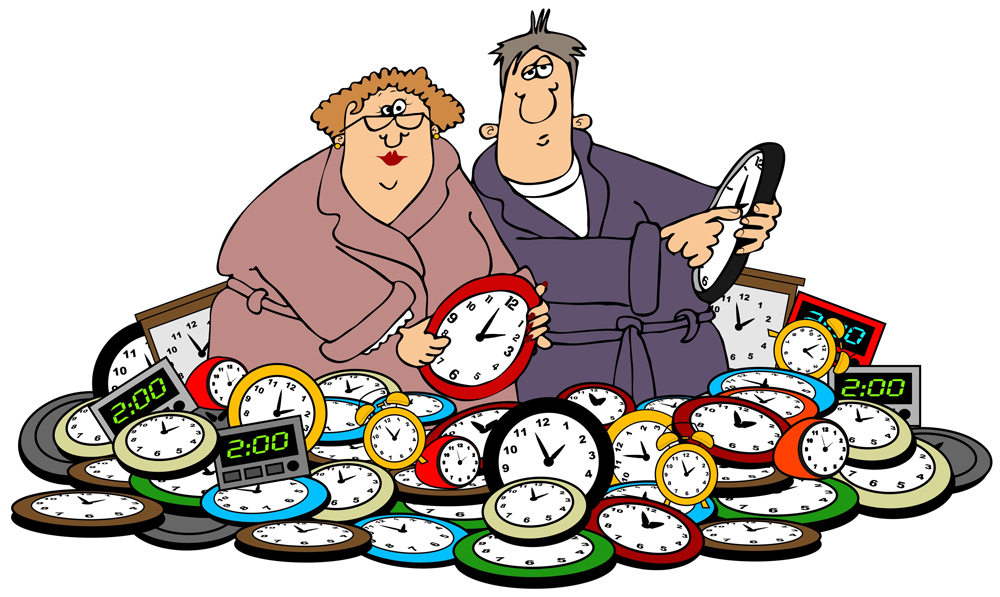
Don’t Forget To Change Your Clocks And 10 Tips To Beat Daylight Saving
Residents will experience the annual disruption in their sleep this weekend as everyone’s clocks spring forward one hour on Sunday.
Every March, daylight saving time forces residents around the United States to recalibrate their internal clocks to experience darker mornings and lighter evenings.
Today, 40 percent of the world observes daylight saving time to “make better use of daylight and to conserve energy.”
While Germany and Austria were the first countries to use DST in 1916, a few hundred Canadians in Port Arthur, Ontario, may have beat them to it.
According to the timeanddate.com, residents of today’s Thunder Bay turned their clocks forward by one hour to start the world’s first DST period on July 1, 1908.
Between 1914 and 1916, several other cities throughout Canada would implement DST periods and in some cases, such as Winnipeg, implement a permanent and automatic time change due to its popularity.
According to history.com, Englishman William Willett led the first campaign to implement what is known today as daylight saving time. In 1907, Willett proposed the idea of “summer time” in a brochure titled ‘The Waste of Daylight.’
In 1909, a bill was presented to the British Parliament several times but didn’t go anywhere until 1916. A year after Willett’s death, the United Kingdom implemented DST for the first time.
Today, DST affects 1 billion people every year in over 70 countries, and dates for the period vary from country to country.
In the United States, Arizona and Hawaii are the only two states who do not observe DST and have not for decades.
Most of Arizona has not observed DST since 1967; however, the Navajo Indian Reservation, which extends into Utah and New Mexico, does observe the time change.
An Arizona Republic Reporter, Scott Craven, explained in 2017 that most of the state ignores DST partly because of their climate; an earlier sunset gives residents more time to enjoy cooler temperatures before calling it goodnight.
Hawaii observed its last DST change during World War II when Hawaiian Standard Time was advanced one hour to “Hawaiian War Time.” The state observed the time change year-round from February 9, 1942, until September 30, 1945.
But the state ultimately opted out of the observation of DST as the islands didn’t experience an increase in daylight hours compared to night.
So, while Hawaii and most of Arizona will continue life as usual, the rest of the U.S. will find themselves struggling to convince their bodies it’s bedtime an hour earlier than it is used to.
Sleep specialists encourage people to focus on good sleep hygiene when it comes to adjusting to the time change.
Here are some helpful tips that may help get you back on schedule.
- Avoid alcohol and caffeine. Consuming alcohol and caffeine before bed can interfere with good sleep habits.
- Don’t eat late. Finish meals and snacking at least two or three hours before going to sleep.
- Avoid long naps. Longer daytime naps can make it harder for you to get a full night’s sleep. Shoot for a 20-minute afternoon nap instead.
- Turn off electronics. Those screens emit a lot of blue light which interferes with the brain’s natural ability to fall asleep. Flip the switch at least one hour before bedtime.
- Turn out the lights. Light is the most potent interrupter of sleep. Try darkened curtains to reduce outside light.
- Don’t fall asleep on the couch. The brain makes connections to places we sleep. If you repeatedly fall asleep on the couch, it becomes a habit that you don’t fall asleep in bed.
- Take a hot shower. The warm water helps you get a deeper sleep.
- Make your body tired. Exercising about four to six hours before bedtime can make your body tired enough to fall asleep naturally.
- Practice and repeat. Find a good bedtime routine and stick with it. Some minor routine changes during weekends are OK.
- Talk to your doctor. If you’re having prolonged issues getting good sleep, you may need a doctor to evaluate you for sleep disorders. Find out if you could benefit from a sleep study.
Daylight Saving Time will extend from March 10, 2019, to November 3, 2019.






